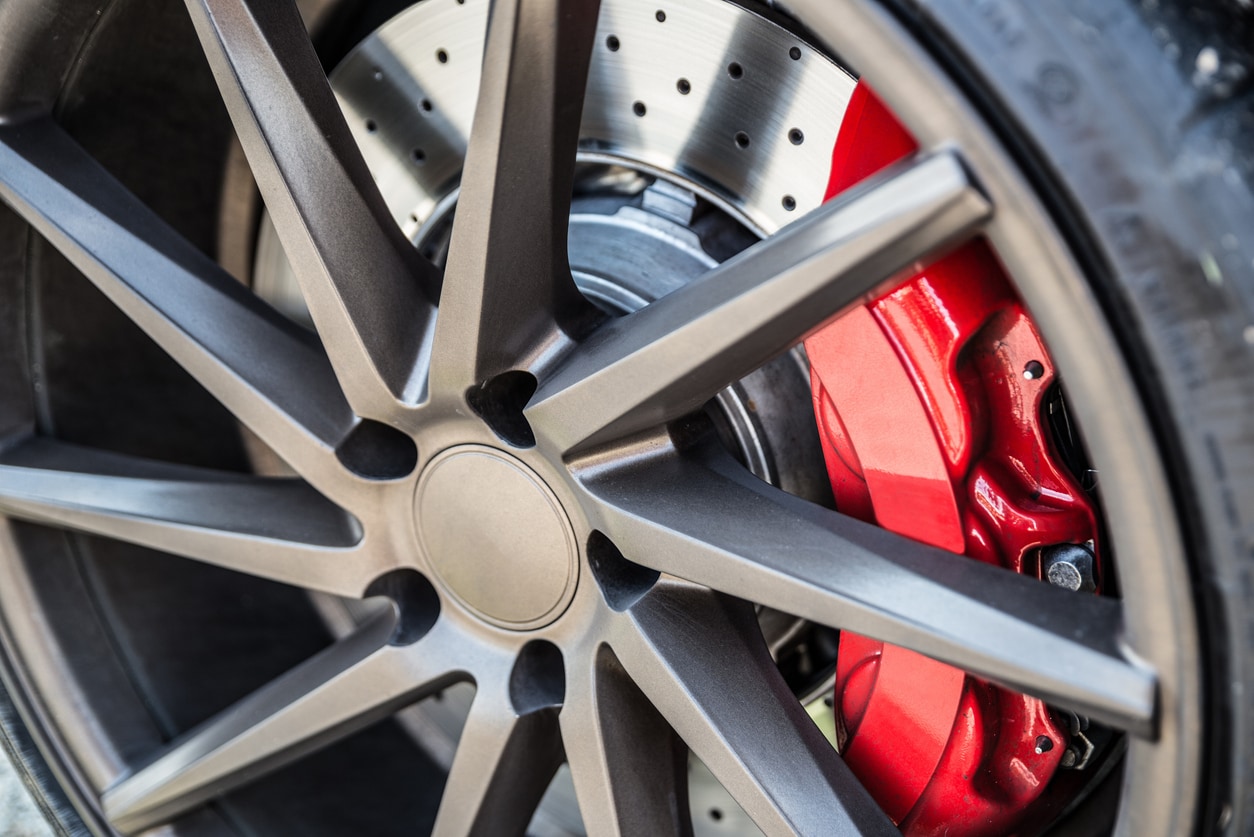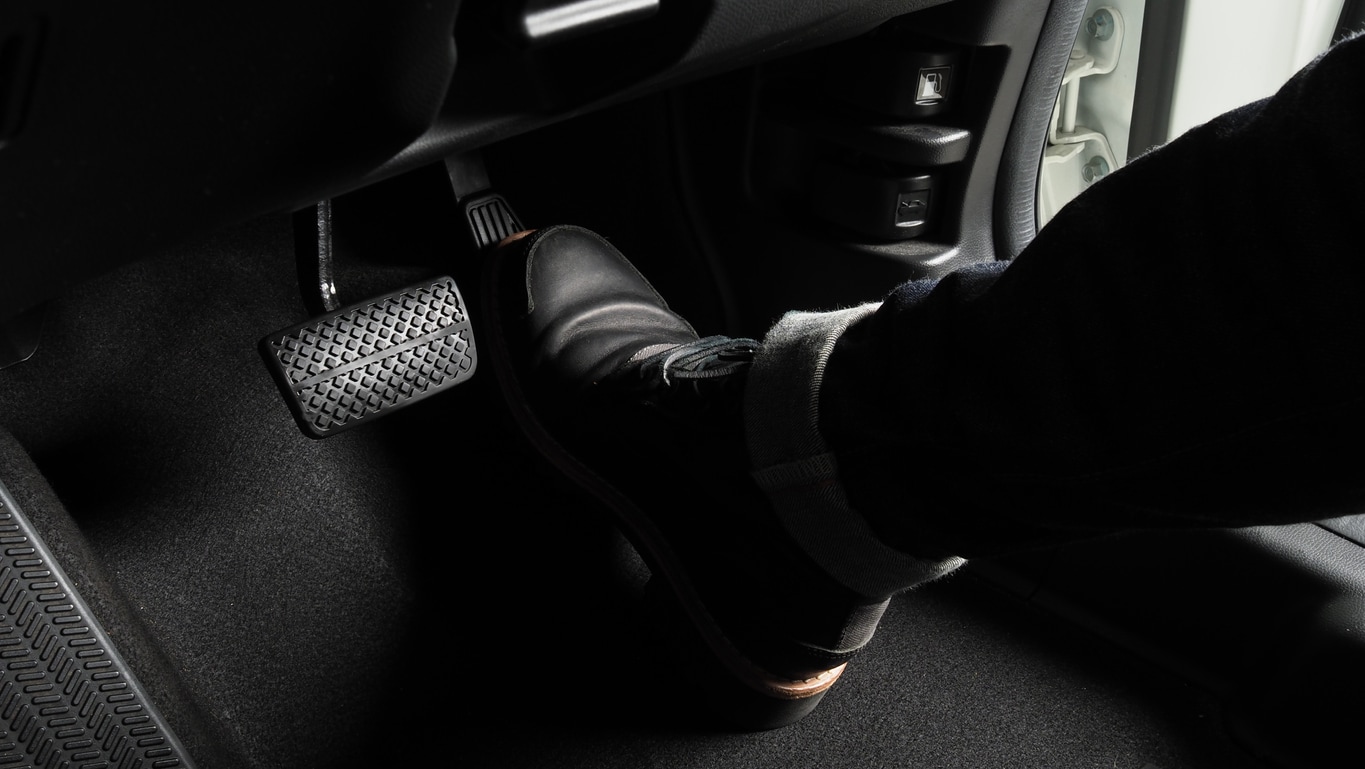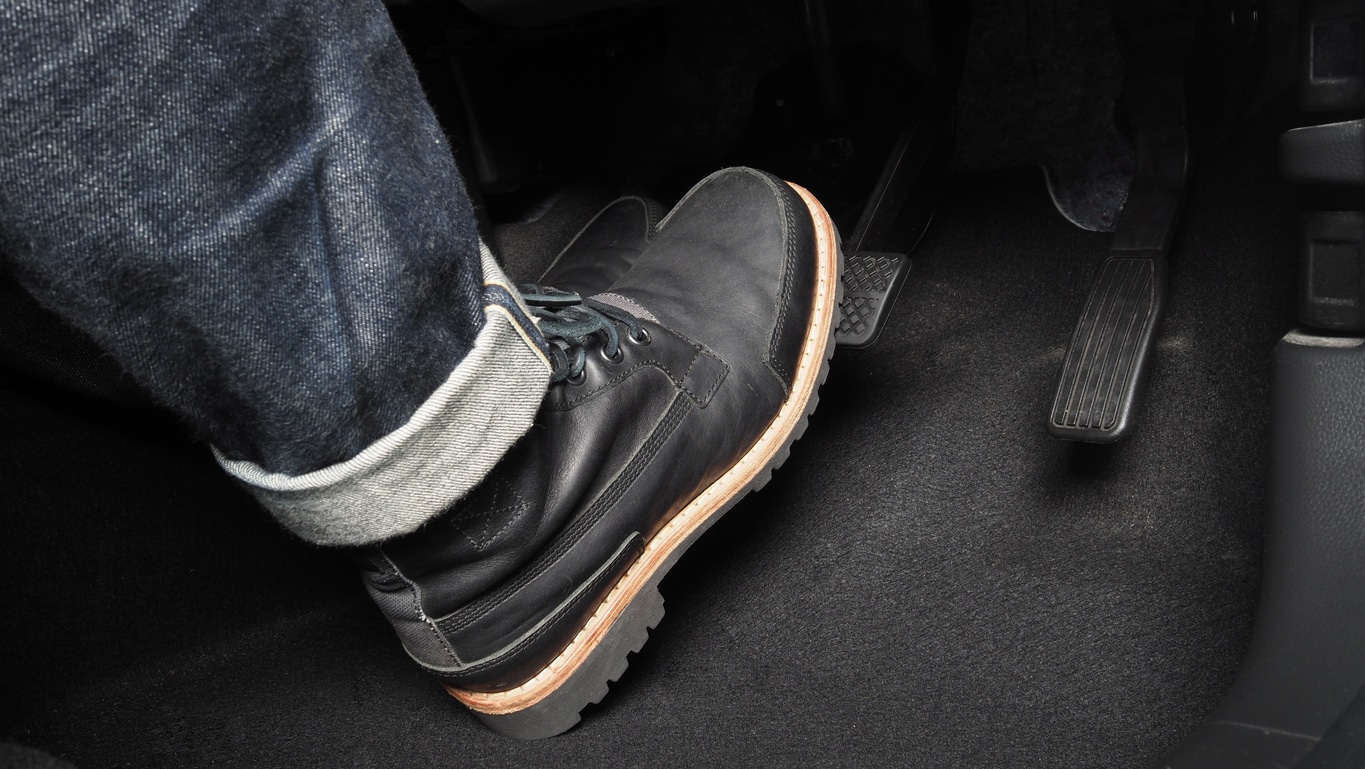From old school mechanical brakes to newer style regenerative brakes, nowadays there are many different types of brakes used in cars. Whether you’re considering purchasing a new automobile or your brake service light has turned on, it helps to understand the types of vehicle brakes you’re dealing with.
Keep reading for a breakdown of the common types of braking systems in automobiles and what components they include.
Hydraulic Brakes
The primary braking system used in most modern vehicles is the hydraulic braking system. Hydraulic braking systems use brake fluid to move parts like brake pads or shoes that enable your car to slow down.
The way hydraulic brakes work is pretty straightforward: brake fluid pressure is sent through the master cylinder whenever you engage the brake pedal, creating hydraulic pressure. This pressure pushes the brake fluid through the brake lines and down to each wheel. Once at the wheels, the brake fluid pushes friction material against either a rotor or brake drum, depending on the type of brake on the wheel. This friction material takes the kinetic energy of the spinning wheel and turns it into heat energy, as the friction force slows down the wheel!
You will typically find two types of hydraulic brakes on your vehicle’s wheels: disc brakes or drum brakes. Here are the main differences between the two:
Drum Brakes
Drum brakes, invented in 1900, were the first type of in-wheel braking system. While they were originally mechanical in design — using wires and levers to operate — they were later adapted to the more efficient hydraulic system.
Hydraulic drum brakes and disc brakes function in similar ways. That is until the brake fluid pressure reaches the wheel, where each uses a different set of components to create friction on the wheel. Drum braking involves using a set of brake shoes pushed outward by pistons (which are pushed by hydraulic pressure from the brake fluid) until they press firmly against the rotating drum inside the wheel. The friction from the brake shoes slows down the wheel drum, decelerating your car.
While you may still find drum brakes on the rear wheels of some modern cars, they’ve been largely replaced by disc brakes. This switch to disc brakes is often due to their greater stopping power and efficiency.
Disc Brakes
Even though disc brakes and drum brakes were invented around the same time, disc brakes didn’t become the preferred braking system until the 1950s. Disc brakes receive pressurized fluid from the master cylinder, similar to drum brakes. Except instead of a wheel cylinder with pistons, the fluid is sent to a caliper, which houses a set of brake pads. The fluid pressure causes the brake pads to squeeze a steel rotor that is attached to the spinning wheel. The friction from the brake pads on the rotor slows the spinning and brings your car to a stop.
Disc brakes became the preferred braking system because they are easier to clean than drum brakes, manage heat better, generate more stopping power, and provide better handling in wet conditions.
Anti-Lock Brakes
Another type of brake within hydraulic systems is anti-lock brakes or ABS. Anti-lock brakes are automatic braking systems that activate in slippery or emergency situations. In slippery conditions or during hard emergency braking, your car may begin sliding out of control or skidding if your brakes lock up. Your ABS prevents this by automatically and rapidly pumping the brakes at faster-than-human speed — sometimes more than 15 times per second. However, ABS only works when you use the brake pedal.
Anti-lock brake systems use electronic sensors to sense when the wheels are about to lock up. They then adjust the amount of brake fluid pressure sent to each wheel, allowing you to focus on steering to safety while the ABS and your foot handle the braking.
Mechanical Brakes
The first types of car brakes were operated mechanically, meaning they used a system of mechanical linkages that are manually controlled by a lever to transmit braking force. While most brake types have since evolved into hydraulic or regenerative systems, the parking brake still typically operates mechanically.
Parking Brake
The parking brake, also known as a hand brake or emergency brake, is independent from your hydraulic braking system. It is still sometimes referred to as an emergency brake because its original purpose was to act as a failsafe if the main brakes broke down. Nowadays, it’s mostly just used for safe parking.
The parking brake typically works by mechanically locking your rear wheels. When you pull the hand brake or push the parking brake button, the rear brake pads or shoes press against the rear rotor or drum, preventing it from moving. Not only does the parking brake ensure that your car doesn’t roll away on an incline, but it also gives your transmission a break by reducing strain on your parking pawl. But to get this benefit, you have to make sure you’re using your parking brake correctly.
Regenerative Brakes
As more hybrid and electric vehicles hit the road, regenerative brakes are becoming more commonplace. In a regenerative braking system, the vehicle’s electric motor helps to power or restrict the rotation of the wheels.
Regenerative braking systems, or RBS, are among the newest braking technology on modern vehicles, specifically hybrid and electric vehicles. Regenerative brakes greatly improve vehicle efficiency by capturing the kinetic energy from braking and using it to help recharge the batteries that power the electric motor.
Even though many electric vehicles still come with hydraulic brakes, the regenerative brakes can do most of the work to slow the vehicle. Regenerative braking occurs when you press the brake pedal or simply take your foot off the accelerator to coast.
Top Quality Service for Any Type of Brakes
Don't let bad brakes (disc, parking, or otherwise) get in the way of your smooth driving experience. Visit your nearest Tires Plus for all of your inspections and brake service needs.



